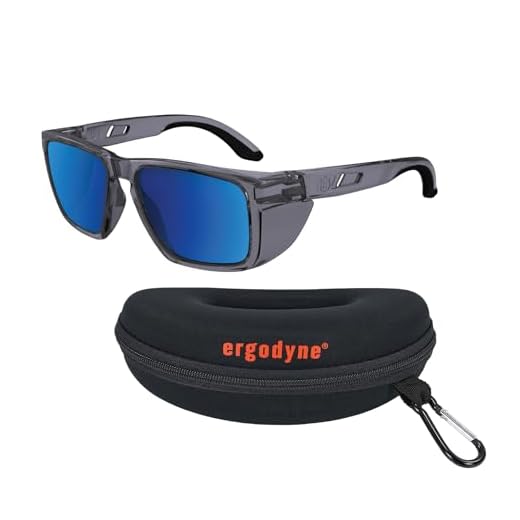






Wrap each pair meticulously in a soft cloth or microfiber pouch to prevent scratches. This step minimizes any potential damage during transit.
Utilize a hard case specifically designed for eyewear. Sturdy enclosures offer superior protection against impacts, ensuring your optical accessories remain intact.
Position the case in a secure area within your suitcase, ideally between softer items like clothing. This cushioning effect adds an extra layer of defense against jostling and pressure.
Consider including a layer of bubble wrap for additional safety. Surround your case with this protective material, especially if your travel involves checked bags, to absorb shocks effectively.
For prescriptions, carry a backup pair separately in your carry-on. Accessibility not only provides peace of mind but also safeguards against potential loss or damage.
Label your case clearly if traveling with multiple individuals. This helps identify your belongings quickly and prevents any mix-ups in busy locations.
Secure Your Eyewear During Travel
Utilize a hard-shell case specifically designed for eyewear. This provides the best protection against impacts and crushing. Ensure the case is a snug fit to minimize movement inside.
Preparation Steps
- Clean your lenses before storing them to avoid scratches while traveling.
- Remove any accessories like chains or straps to prevent tangling or damage.
- Consider placing a soft cloth inside the case, cushioning the lenses during transit.
Storage Tips
- Keep the container in a secure compartment of your bag to avoid crushing by heavier items.
- Avoid placing other items on top of it to maintain its integrity.
- Pack the hard case in between soft items like clothing for added cushioning.
When at your destination, store your eyewear in a safe place. Avoid leaving them in places where they can easily be knocked over or damaged.
Choosing the Right Case for Your Eyewear
Select a hard-shell case for optimal protection. These cases prevent crushing and are ideal for air travel or handling in busy environments. Look for models with a soft interior lining to minimize scratches.
Size and Fit
Ensure that the case fits snugly around the frames without excessive movement. Measure your eyewear or choose a case that accommodates various styles, including oversized options. A secure fit reduces the chance of damage during transport.
Additional Features
Consider cases with compartments for lenses or cleaning cloths. Some designs include a wrist strap or belt loop for easy carrying. Waterproof materials also add a layer of protection against spills or rain, enhancing durability for frequent travelers.
Step-by-Step Packing Technique to Minimize Damage
Begin with securing a sturdy and protective case. Ensure it fits your eyewear snugly, eliminating any unnecessary movement while in transit.
Layering for Protection
Utilize bubble wrap or soft fabric to wrap each piece individually. This additional cushioning absorbs shocks, reducing the risk of scratches or breakage.
Strategic Arrangement
When placing the wrapped items into the case, arrange them in a manner where they do not touch each other. Position heavier items at the bottom to prevent any pressure on lighter ones. Fill gaps with soft materials to keep everything tightly in place.
Finally, store the case in a secured section of your travel accessory, such as between clothing items or in a compartment that avoids heavy objects on top. The combination of good cushioning and careful placement minimizes risks significantly.
Best Packing Materials to Use for Added Protection
Foam padding serves as an excellent barrier against impact. Cut foam to size so it snugly fits around each item, creating a customized cushion that absorbs shocks effectively.
Bubble Wrap
Using bubble wrap is another straightforward method. Wrap each piece several times to ensure adequate protection, securing the ends with tape. This material not only offers cushioning but also prevents scratches.
Soft Fabric
Consider using soft fabrics like microfiber or cotton. These materials are gentle and can be wrapped around individual items for extra protection, eliminating the risk of abrasions. Furthermore, they can also serve as a lightweight filler to occupy any empty spaces in your suitcase.
Cardboard dividers can be cut to form separate compartments, protecting against jostling in transit. Utilizing these ensures that every item remains in place, reducing the likelihood of contact.
For added security, consider hard-shell structures or cases. These provide a robust outer layer that can withstand external forces, shielding delicate contents effectively.
Combining these materials can enhance protection significantly. For unique travel experiences, exploring the best luggage for international travel crate or the best luggage for yacht week could be beneficial as well.
Frequently Overlooked Tips for Traveling with Eyewear
Always keep a spare microfiber cleaning cloth handy. This minimizes scratches on surfaces and ensures clear vision throughout your trip.
Consider the temperature extremes your eyewear will encounter. Avoid leaving them in direct sunlight or extremely cold environments, as this can warp frames and damage lenses.
Utilize soft padding within your carrying pouch, such as a rolled-up t-shirt or a small towel, to provide extra cushion against impacts.
Before traveling, clean your lenses thoroughly. Smudges and dirt may worsen during transit, hindering visibility when you put them on at your destination.
If traveling overseas, check local regulations regarding eye care products, particularly solutions, to ensure compliance with customs. Research any restrictions on transportation liquid volumes.
A primary pair should be easily accessible while a backup pair can be tucked away in your checked items. This strategy aids in avoiding mishaps.
On lengthy flights, ensure that your eyewear is easily retrieved from your carry-on. Eye fatigue may arise, and having them nearby is beneficial.
Lastly, pairing the fitting with the right case increases longevity. Invest in a hard-shell option for ultimate durability. For an alternative perspective on choosing containers for various needs, read more about whether you can chill red wine.







